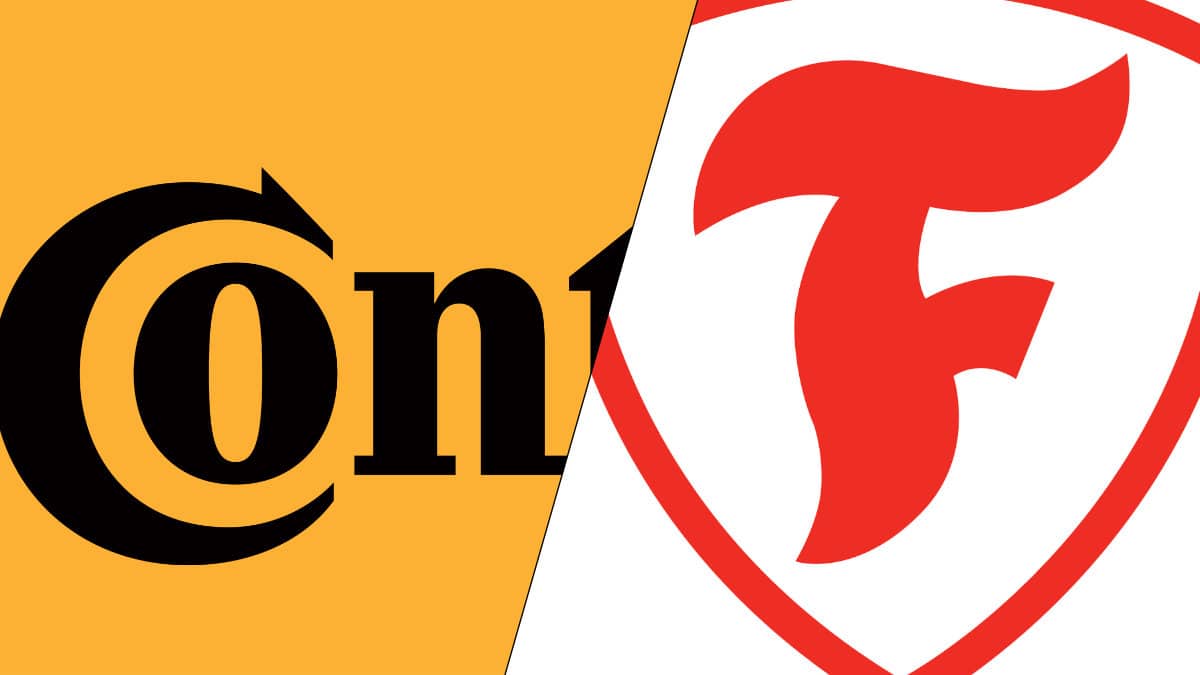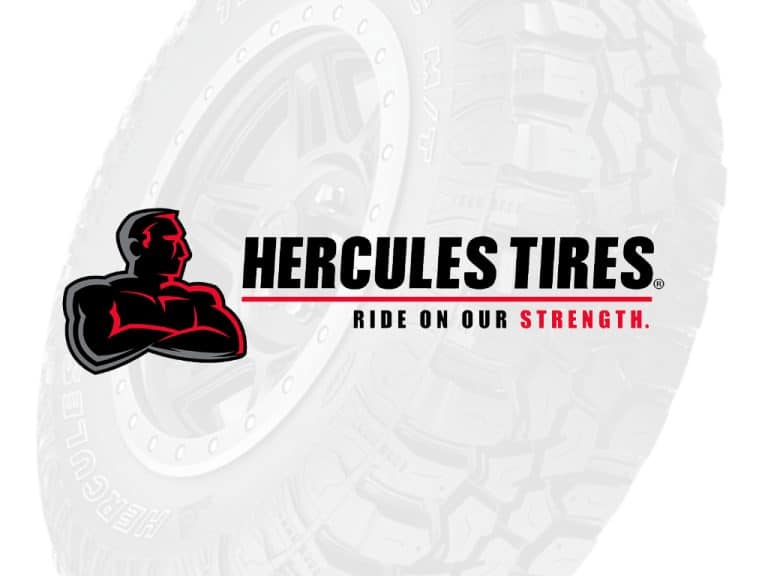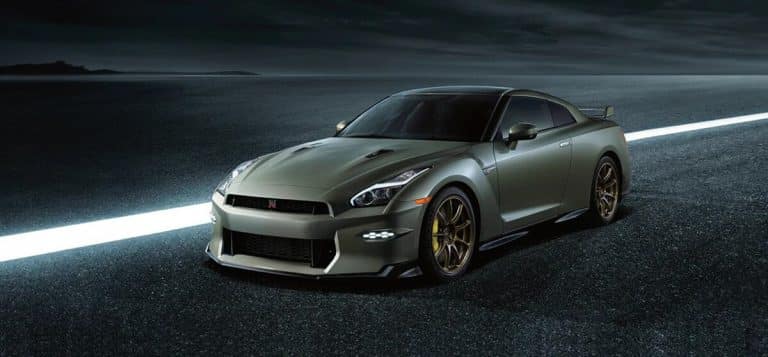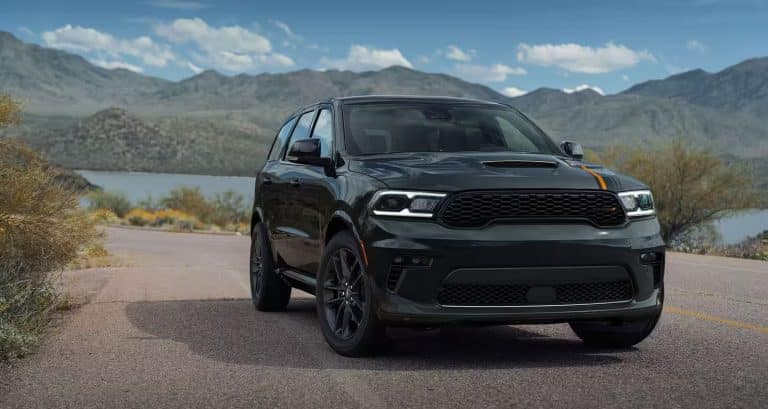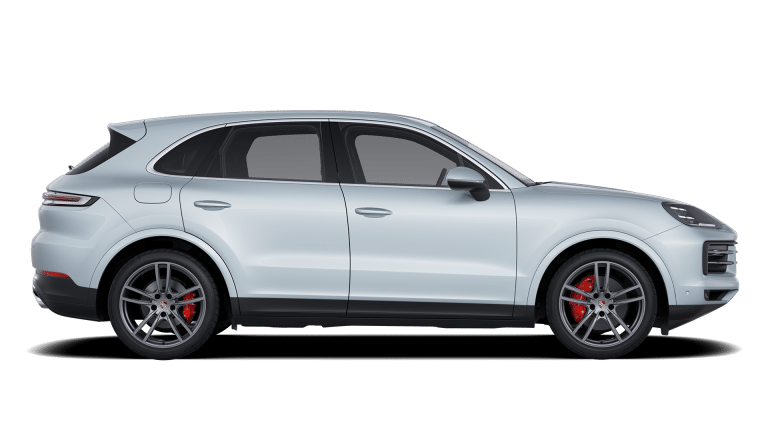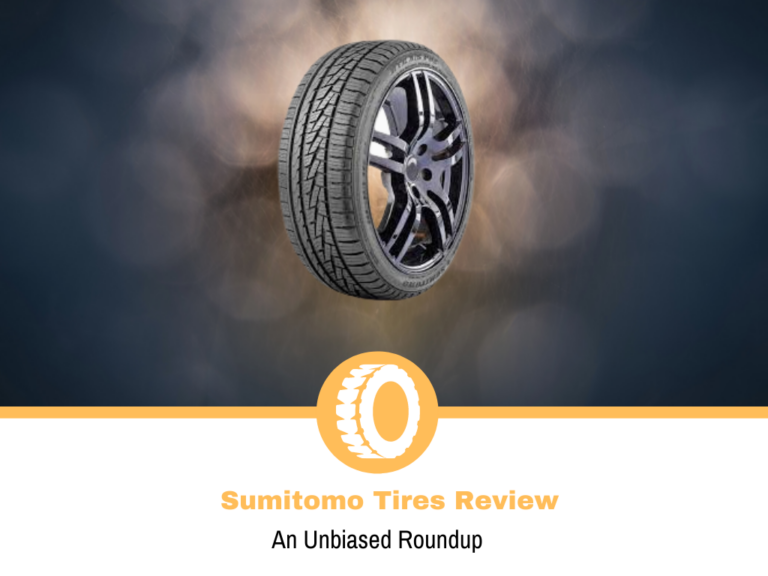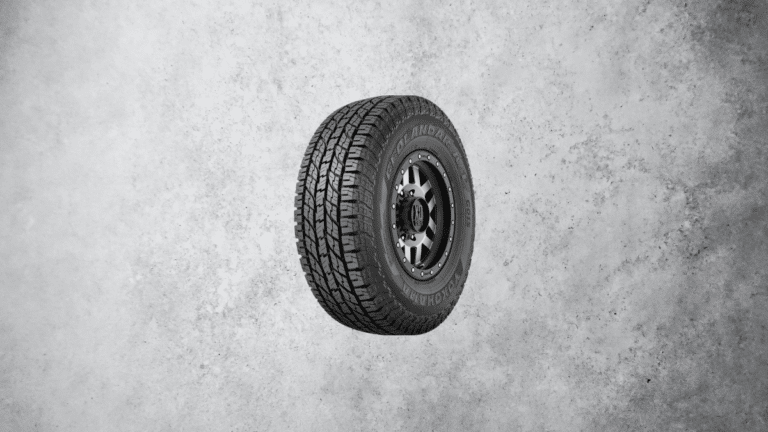Continental vs Firestone Tires
Thanks to the wonders of technological advancement, today’s tire options are excellent. Unlike in the early 20th century, the number of brands we have at our disposal is massive. They range from the expensive premium brands to the cheap, mostly Chinese ones that I recommend avoiding.
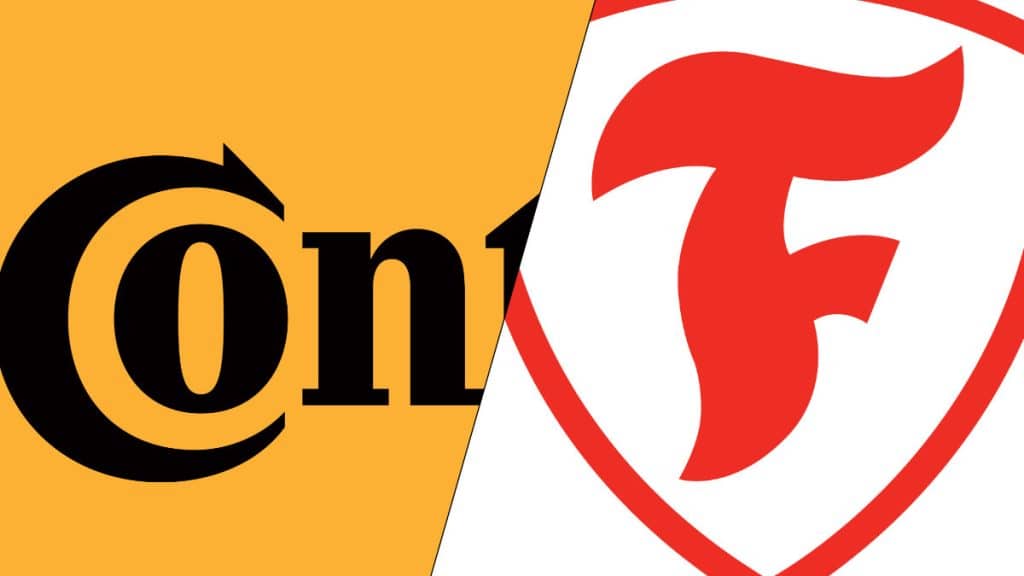
Continental Rating: 4.8/5
Firestone Rating: 4.5/5
Some people choose the manufacturer first when choosing a new set of tires. I’m not judging, but some car owners are “loyal” to a brand and go for that one. On the other hand, some don’t look at the brand but look at the performance.
We often make comparisons between two brands from the same category. What about manufacturers from different classes? Is a premium brand better than a mid-range one? A while ago, I spoke about expensive tires and if they are worth it.
In this comparison, the premium tire manufacturer Continental is going against the mid-range Firestone. Both have positioned themselves as excellent choices, but today we’ll discuss which is better and why.
Continental’s History
We have one of the oldest European tire manufacturers from the premium segment. Continental was founded in Hanover, Germany, in 1871, putting it a bit before cars were born. With that in mind, you can assume that the company had other products.
In the early years, Continental wasn’t even thinking about car tires. Instead, the focus was on other rubber products like boots or belts. Around the same time, bicycles became popular, so the company began producing tires for them.
When cars hit the market, Continental went after that segment. One of the first manufacturers to ask for tires for its cars was Mercedes. This helped the tire manufacturer increase its popularity and started making tires for other brands.
Continental was among the first companies, but it also produced excellent products. Combining both enabled it to become one of the most popular premium brands today. Thanks to that and multiple innovations, the company was at the forefront of tire evolution and improvement.
Part of the many innovations that Continental introduced to the market is one of the main reasons this company is active in many motorsports. Over the years, we’ve seen this manufacturer in Formula 1, Extreme E, IMSA, and many more. Also, there is the Continental Tire SportsCar Challenge, which is a racing event organized by the company itself. With cars aside, we can also see this company taking part in bicycle races, because it still produces tires for them.
Considering Continental’s history and heritage, it’s no wonder why it’s on top of most lists as the best tire manufacturer.
Continental’s tire families
Figuring out how things work with Continental’s tire families is pretty simple. Each covers a specific set of features, so it’s easy to decide which one to get.
SportContact
The list starts with the SportContact family, so it’s easy to figure out the type of tires you’ll find here. These are the type of tires you’ll be aiming for if you’re looking for a set that can deliver high performance. These tires are designed for excellent grip and traction levels, combined with dynamic handling. With that said, you should consider that you will give up a bit in the refinement department.
Recently Continental released its latest addition to this family – the SportContact 7. It’s an excellent tire, putting it as one of the best in its category. Despite the recent addition, the older SportContact 6 is still up for sale with some retailers. It may not be the best, but the price makes it a good bargain. As for fitment, these summer tires can be fitted to almost anything, ranging from passenger cars to SUVs.
ExtremeContact
This next family is similar in terms of what the tires offer but relies on different technologies. The ExtremeContact set of tires are excellent for people who want the best performance. These are ideal for people looking for sporty characteristics and don’t mind a stiffer ride or more noise from the road.
When it comes to ExtremeContact, Continental has a more flexible offering. With this family of tires, you can choose between summer or all-season models. If you’re after a summer tire, you have models like the Sport, Force and DW, designed to be fitted to passenger cars only. For the all-season segment, there’s the DWS 06, a tire that covers a wider range of vehicles like passenger cars, CUVs and SUVs.
WinterContact
Moving away from the summer or all-season options, we have a family of tires designed for winter conditions. The WinterContact is Continental’s winter tires that are leaning a bit towards performance driving. They will offer sporty driving, but won’t sacrifice too much in terms of comfort or noise levels.
In this category, Continental offers multiple options, depending on what you’re looking for. The newest model in this family are the TS 870 and TS 870 P, but the older ones are still available. You can find the TS 860, TS 860 S, TS 850, TS 850 P, or TS 830 P with some retailers. As older models, you’ll also be looking at a discounted price, so it’s a good bargain. This family covers all types of vehicles, depending on which model you choose.
VikingContact
If you compare the VikingContact with the previous family, you may struggle to find any differences. Both offer winter tires, but with this family, you’re looking at the touring models. As a result, these tires will offer a more refined driving experience and won’t be as sporty as the previous ones.
Unlike the previous family, with the VikingContact ones, there isn’t a lot to choose from. Continental has 7 and 6, both of which are excellent options if you’re after winter touring tires. In terms of flexibility, you can fit these to passenger cars, CUVs and SUVs.
IceContact
The previous two families were winter tires, and so is this one. With that said, unlike those two, with IceContact, Continental aims to cover owners that are looking for better performance on ice. As a result, this is a family of tires that are studdable. Adding the metal studs to the tread means you’ll get better traction on icy surfaces.
Like with the previous family, IceContact doesn’t have tons of models to choose from. There’s the current model 3 and its predecessor 2. The older one can be found at a discount, so again, you’re looking at a good bargain. Despite having only 2 models, the coverage is excellent. You can fit these tires to a wide range of vehicles, from small hatchbacks to larger SUVs.
CrossContact
Several of the previous families offered models that cover the CUV and SUV segment, but there’s a dedicated one. Continental’s CrossContact is a group of tires designed for the “larger” vehicles, even covering light trucks. The best part is that there are multiple types that cover several driving segments, depending on what you’re looking for.
If you’re looking for summer tires, you’ll have to settle for the UHP. This is the performance-oriented tire for these kinds of vehicles, so don’t expect the most well refined experience. Continental also has a mixed performer in the all-season segment called LX Sport. There is some sportiness to the tire, but it’s relatively refined for daily driving. In the touring segment, there are models like the RX, LX20 or LX25, all-season tires designed to be comfortable and perform well. If you’re the type of person who wants some off-roading experience, then you have the ATR. Finally, in the winter segment, the CrossContact family has the Winter model.
EcoContact
Eco-friendliness is something that Continental is known for, so it shouldn’t come as a surprise that it has the EcoContact family. In this family of tires, you’re looking at models designed to reduce rolling resistance. The idea behind this is to improve mpg, lowering CO2 emissions. With this in mind, you can probably guess that we’re talking about touring tires.
For the passenger segment, Continental offers the EcoContact 3, which is a slightly older model. As a result, there are smaller sizes, so even an older car can benefit from it. The CUV and SUV segment is covered with the 5, 6 and 6 Q that come in larger sizes. All of them are summer tires, regardless of which model you go for.
PremiumContact
Another family of touring tires is the PremiumContact. Even though these are touring tires, Continental offers them as grand touring ones, meaning that it’s a mix of performance and refinement. They fall between the performance tires and touring ones.
Continental still has some of the older models up for sale and for the passenger segment you have the PremiumContact 2. It’s an older model, but with a good discount it’s a good bargain. The 5 and 6 models are newer and cover a wider range of vehicles. Like with the previous family, this one only offers summer tires.
Conti.eContact
EVs and hybrids have increased in popularity and sales, so Continental worked on covering them as well. The Conti.eContact family of tires that aim to keep the rolling resistance as low as possible, while also being quiet. This is achieved without sacrificing performance.
Unfortunately, Continental doesn’t have tons of models to choose from this family. The passenger car segment has two models, one for EV and one for hybrid. You could find some CUVs where they could fit, but SUV owners are out of luck. In terms of driving conditions, both models are summer tires, so winter performance is off the table.
Van Families
Last but not least are the Van families of tires. Continental has multiple of these with the primary goal of covering commercial vehicles. It means that you can also fit these to SUVs or light trucks, depending on the size. Considering the application, you’re looking at touring tires for multiple driving conditions.
The most available models in these families are the summer tires. You have tons of options with different characteristics, depending on what you’re after. For the most part, you’re looking at longevity and refinement with decent performance. On the winter side of things there are a few models, but you won’t find any all-season ones.
Firestone’s history
On the other side of the ocean, we have the domestic tire manufacturer Firestone. The company was founded in 1900 in Akron, Ohio in an era where cars were already a thing. “It started with a horse .. and four tires” as it says on the company’s website. It may started like that, but it turned the manufacturer into one of the largest one on the market today. It only took 2 years for the first factory to open and another year before it began producing tires. the high quality and good performance pushed it towards brilliant success, surpassing 1-million-dollar sales mark.
Throughout Firestone’s history, there are many innovations that helped it climb the ladder. This not only increased popularity but also pushed the company to break the barriers even more. Speaking of braking, the manufacturer designed tires that broke some speed records. Some of these happened in ages where people think that’s impossible. The success and innovations helped the company expand its
Since the early days, Firestone got involved in racing. About a decade after opening, this manufacturer began making tires for Indy 500 and in 1911 was proud to have a car with its models. Continuing on, the series became what Firestone was known for even until this day. It took part in other racing series like Formula 1, but without such a great success.
In recent decades, the company struggled financially, so a sale was imminent. Bridgestone purchased Firestone in 1988 and left it running under its original name.
Looking at Firestone as a whole, we have a tire manufacturer that is considered an excellent option for people looking for something a bit more affordable. The best part is that in this case, the more affordable tires aren’t that much worse than the premium ones.
Firestone’s tire families
Unlike Continental, Firestone has a slightly different type of grouping the tires. As a result, there aren’t as many families as with the previous manufacturer.
Firehawk
I’m starting the list with my favorite family from Firestone – Firehawk. These are tires you’ll choose if you own a performance vehicle and want to get the most out of it. Maximum grip and traction, combined with dynamic handling, is what these tires do best. The refinement isn’t terrible, but they aren’t designed for that.
There are loads of models in this family, covering multiple driving conditions. On the all-season side of things, you have the AS and AS V2, as well as the GT, GT Pursuit and GTA-03. Some are older models, so check for discounts to get a good bargain. The summer segment is covered with the Indy 500, which is the most performance-oriented tire of the bunch. If you’re after some winter performance driving, then your option here is the PVS.
Winterforce
Despite a few winter models here and there, Firestone has a dedicated family for these conditions. The Winterforce tires come in multiple flavors, designed to cover driving in all winter conditions. In this family of tires, we’re also looking at a massive flexibility in terms of vehicle fitments.
For passenger cars, you have the Winterforce 2, and the original is still available with some retailers. Both are studdable tires, so ice performance is guaranteed with them. With the larger vehicles, you have several options. The CV model is designed for SUVs and light trucks and is a studless option. If you want studs, you’ll have to look at the 2 UV and the LT, both of which cover the SUV and light truck segment.
WeatherGrip
In recent years, Firestone included newer models and families in its lineup and WeatherGrip is one of them. Unlike some of the other families, this one covers the all-weather segment. It means that you’re getting a better winter performance when compared with all-season tires.
In the WeatherGrip lineup of tires there’s only one model, carrying the same name as the family. Based on Firestone’s claims, this is a model that can be fitted to passenger cars and minivans. This includes CUVs, mostly, but it’s not designed for SUVs or light trucks.
Destination
Moving away from the passenger or minivan tires, we come to a family that covers the larger vehicles. The Destination family is the one you’ll be looking at if you own an SUV or a light truck. Despite the vehicle application, these tires cover multiple driving segments.
For people that drive on paved roads, you have the LE3 and the LE2 with some retailers. These are highway all-season tires, covering pretty much most people’s needs in daily driving scenarios. For the combined driving experience, there are the all-terrain models A/T2, A/T and X/T. Finally, the most hard-core off-road performer Firestone has on offer is the M/T2. As you can expect, this is not a tire that people would daily drive too much, as it’s not designed for that.
Transforce
In some ways, the Trasforce family of tires is very similar to what the Destination one offers. The technologies and manufacturing processes may be different, but the applications are similar. Firestone offers several models in this family which cover the SUV and light truck vehicles. With that said, the driving conditions aren’t the same, so you’re not getting the same flexibility.
In the highway department, there are the HT2, HT and CV, all of which are made for paved roads. They are all-season tires, so there is some winter performance available if needed. In the all-terrain department, Firestone has the AT2 and AT, which offer a decent blend between performance on and off-road.
All-Season
Another one tire-family option is the All-Season. Firestone didn’t put too much effort into the naming scheme, but that doesn’t mean it’s a bad product. As you can guess from the name, this is an all-season model with touring properties.
As far as fitment is concerned, based on the sizes, the flexibility isn’t terrible. The All-Season is designed for passenger cars and minivans, which is already pretty flexible. In addition to that, some CUVs or smaller SUVs may can even benefit from this tire’s performance.
Champion
We reach a family of tires most manufacturers don’t have. Firestone’s Champion lineup may not cover every segment in existence, but there are options that other families don’t have. The thing that sets this group of tires apart is the fact that it also covers the agricultural segment.
For this segment, you have tires like the Guide Grip and Spade Grip models, as well as the Hydro ND. In the “normal” segment, there are models designed for road use, like the HR and Fuel Fighter. These are all-season options that come in sizes for passenger cars, mostly.
Affinity
Last but not least, we have the Affinity lineup of tires. These are a bit older tires, but regardless of that, they still hold up decently well when compared with the modern options. Even though you have several models to choose from, this can seem limiting to some car owners.
Right off the bat, the main thing to note is that these tires are for passenger cars only. It means that you could fit them to hatchbacks, sedans, minivans, CUVs and maybe some SUVs. In terms of performance, all of them are all-season touring models, so no performance driving here. There are several Touring models, as well as LH30 and the H/T. Each comes with a different set of features, but aim to cover similar driving conditions.
Differences between Continental and Firestone
In a direct comparison, it may seem unfair to put a mid-range manufacturer against a premium one. With that said, things have gotten quite close in the past several decades, so a comparison isn’t the worst thing you can do here.
Performance
Over the years, I’ve witnessed mid-range tires perform identical or sometimes better than their premium competitors. As good as it sounds, when you’re looking at a tire, you want the entire package.
With this in mind, when we compare how Firestone and Continental compare, we see the same trend. Let’s look at the Destination Winter SUV and Winter Contact TS 850P SUV. Both are winter tires designed for SUVs. As far as performance in concerned, in dry conditions, the performance isn’t too different. Sur, the Continental model is a bit better, but nothing major. Wet is where the biggest difference is, with the German competitor outperforming the American one by a larger margin. One area where the Firestone tire is a bit better is in terms of noise, which some people can appreciate.
In the all-terrain segment, there’s the Destination A/T and CrossContact AT. To be fair, the Continental tire doesn’t perform particularly well in some areas, so the Firestone one comes very close. In multiple tests, including paved and non paved surfaces, the CrossContact AT delivers slightly better results than the Destination A/T. There are some larger gaps, but overall we have a consistent performance from both.
Continental’s models are better performers than the Firestone ones. There are some conditions where the difference is larger, but in some we see them very close. In some rare cases, we can see some Firestone models outperforming Continental ones. It’s not a massive difference, but it’s worth mentioning.
Available Options
We can debate that in the number of models we see similar results, but that’s not really the case. When it comes to available options, Continental has the upper hand in several categories. With that said, there is one where Firestone offers more.
If we look at the touring and winter tires, things aren’t too different. Yes, Continental offers wider choice, but Firestone isn’t too far behind. If I nitpick, I’d have to say that Continental is a bit better, mainly because it offers more touring tires from different categories.
It’s the same story in the performance segment. Even though Firestone has a few models you can look at, Continental wins by a significant margin. You have plenty of models available in this category, some of which are older models. They may not perform as well as the newer ones, they are available and are a good option for people that want good performing tires on a budget.
The same advantage continues with SUVs and light trucks, as Continental has more models than Firestone. This applies to all types of tires, regardless if we’re talking about highway or all-terrain models. When you compare them, you’ll notice that the American manufacturer doesn’t offer as much as the German one.
The only area where Firestone has advantage over Continental is in the mud-terrain segment. For the best off-road performance, here you have the Destination M/T2 in the red corner, but there isn’t a competitor in the yellow one.
Price
Continental is a brand knowing for being slightly more affordable than some of its premium rivals. Despite that, Firestone as a mid-range brand is even more affordable, so sometimes it can be a good bargain.
If we compare the PureContact LS and Champion Fuel Saver with 17-inch dimensions, we can see a difference of around $20 in favor of Firestone. On a set of tires, that’s around $80 of savings, plus you’re getting a tire that’s designed to improve MPG a bit. Another thing to note here is that the Continental model has a lower speed rating, so that’s another advantage to team red.
Increasing the reference size by an inch and compare the Firehawk AS V2 with the ExtremeContact DWS 06 Plus, we see a similar difference. The Firestone model is a little over $20 cheaper than the Continental one, but has a lower speed rating.
Moving towards the all-terrain segment, we have the Destination A/T2 and the TerrainContact A/T. There’s a trend here and the difference between two 17-inch tires from both models is roughly $20.
Prices change all the time, but Firestone is the more affordable brand here.
Warranty
The premium manufacturers often offer longer treadwear warranty, which is one reason you’re paying a premium price. Continental is more expensive and, in most cases, offers slightly longer treadwear warranty.
Let’s take the two all-terrain tires from the previous section. We have the Destination A/T2 with a 55,000-mile treadwear warranty and the TerrainContact A/T with 60,000-mile one. Besides that, Continental offers a 6-year coverage, while Firestone offers 5.
Things are different in the highway all-season segment. The TerrainContact H/T and Destination LE3 come with a 70,000-mile treadwear warranty, so they’re evenly matched. As with the previous example, the continental model has one extra year of warranty coverage.
It’s a similar story in the all-season UHP segment. The ExtremeContact DWS 06 Plus and Firehawk AS V2 have a 50,000-mile treadwear warranty. Here, the advantage again goes to Continental for offering 6 years of warranty coverage.
Things are close here, but Continental still has a slight advantage. You’ll either get longer treadwear warranty, or longer period coverage.
Advantages of Firestone
- Slightly more affordable
- Has a mud-terrain option
- Performance isn’t too far back from Continental
Advantages of Continental
- A bit better performance
- Slightly longer treadwear warranty or longer period coverage
- Wider range of models in different categories
Which brand to choose?
There are many people that would say that Continental is better, and I’d agree with the statement. With that said, things aren’t always black and white.
A while ago, I spoke about expensive tires and concluded that they aren’t always the best choice. Using that knowledge, I can say the same thing here. Firestone is a brand that makes excellent tires and as long as you’re not after that 5% performance, it will get the job done. In daily driving scenarios, most people wouldn’t notice a massive difference, and the tires are a bit more affordable.
With that said, there are cases where you can consider Continental. The first one is the type of vehicles you have. Powerful cars will benefit from the extra grip and traction, so it’s not like you’re paying more for something you won’t use. Also, having more options is always better, because you can compare the performance and get the one that suites your needs.
At the end of the day, it may boil down to preference or driving needs. Regardless of which one it is, we’re looking at two very competent manufacturers, but if I’d have to pick a “winner” the crown would go to Continental.
